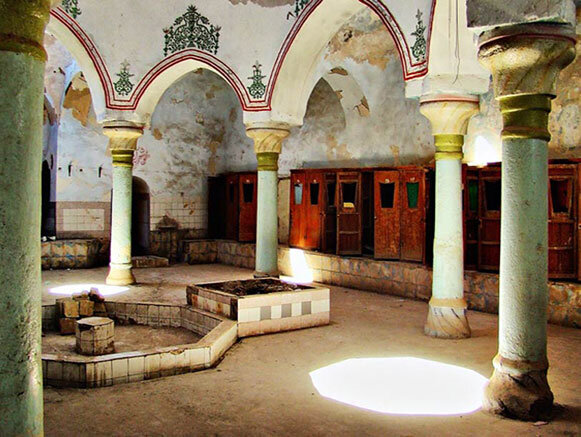Some $95,000 allocated to restore Qajar-era public bathhouse

TEHRAN – A budget of 4 billion rials (some $95,000 at the official rate of 42,000 rials) has been allocated to the restoration of the Qajar-era (1789–1925) Haj Reis bathhouse in Torbat-e Heydarieh, northeastern Khorasan Razavi province.
Due to the monument’s historical value, it needs to be restored in collaboration with the private sector, so it could be used as a tourist attraction, museum, and traditional bath to attract more tourists to the region, Saeid Joghatai, an official with the Planning and Budget Organization, said on Thursday, CHTN reported.
Covering an area of 1,100 square meters, Haj Reis bathhouse is one of the most beautiful and largest historical baths in Khorasan Razavi province.
The bathhouse, which was inscribed on the National Heritage list in 2001, is famous for its exquisite tilework and murals.
Bathhouses or ‘hammams’ in Iran were not only places for bathing and cleaning up. They had a social concept for people who gathered at these places weekly.
It was a place where people talked with each other about their daily life and shared humor and news. There are still bathhouses in Iranian cities but they do not have their social function anymore since most people have bathrooms in their homes due to the modern lifestyle.
Some cities had separate bathhouses for men and women. They were usually built next to each other. However, there were some bathhouses, which were used by men and women at different times of the day.
There were also male and female public bathhouses; at daybreak, a longhorn (booq-e javaz) was blown to announce that the bath was ready. Men came to the baths from daybreak till the afternoon. Women could use the bathhouses from then to sunset. In some cases, five days were allocated to men and two days to women.
Persian literature is full of proverbs, narrations, and folk stories about bathhouses, which indicate the importance of the place in the past time.
Over 60 historical sites have been identified in Torbat-e Heydarieh, of which 17 properties have been inscribed on the National Heritage list so far.
ABU/MG
Leave a Comment